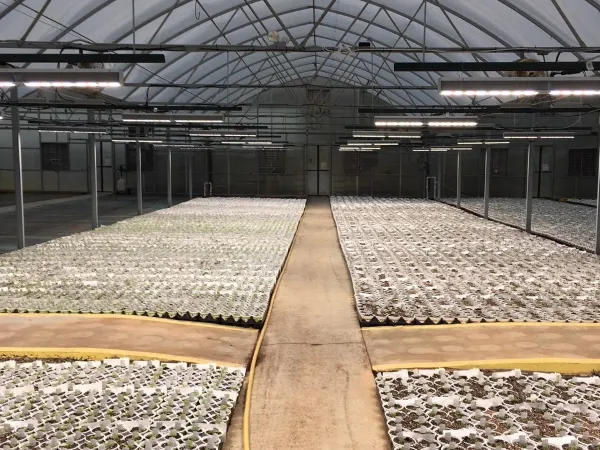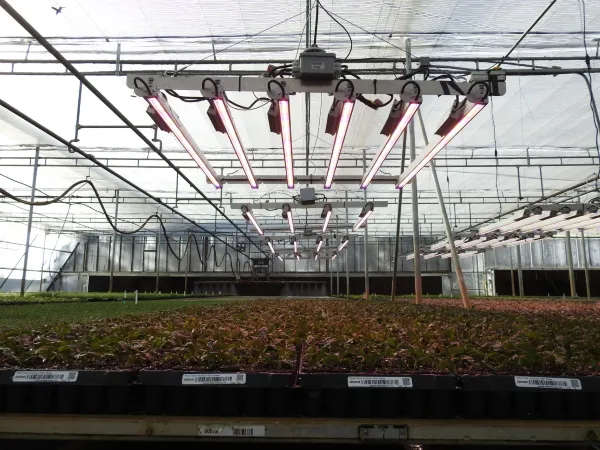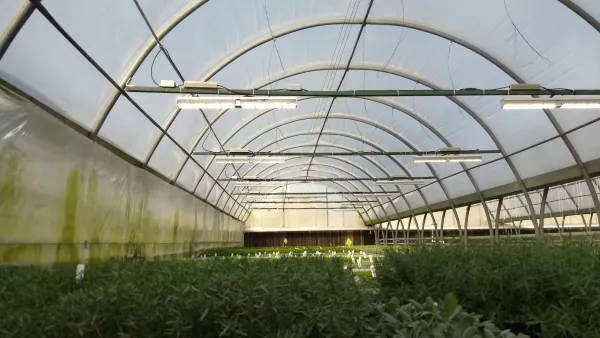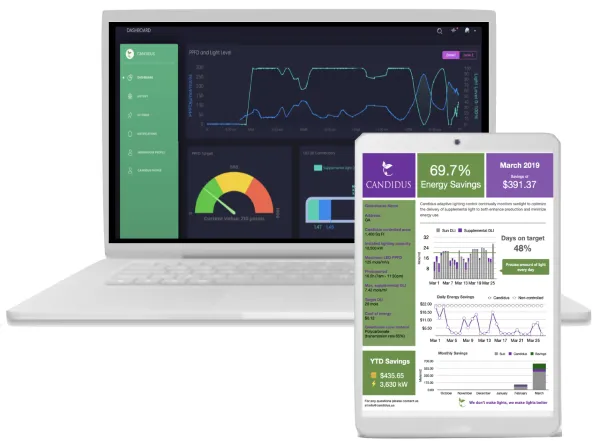Candidus was awarded a $683,562 Conservation Innovation (CIG) Grant from the USDA Natural Resources Conservation Service. Working in collaboration with NRCS and CEA farmers across the US, the company will implement adaptive lighting control technology in 12 commercial greenhouses in Virginia, Michigan, and California.
"In partnership with EnSave, The University of Georgia and the Michigan State University Extension Service, we will (a) demonstrate and quantify the environmental and economic benefits the adaptive lighting control can provide to the greenhouse industry at the farm level, state level, and national level; (b) determine growers’ perception and adoption/rejection considerations for investing in advanced lighting controls; (c) provide NRCS with practice scenario guidance to facilitate the technology’s integration into programs such as EQIP; and (d) promote awareness of the technology through a variety of outreach activities," explains Erico Mattos, CEO of Candidus.

Benefits for growers
This technology will improve greenhouse lighting energy use efficiency and increase operations profitability, Erico says. "Past greenhouse trials have demonstrated kWh savings ranging from 25% to 35% for greenhouses using the adaptive lighting controllers. In the proposed project, we anticipate demonstrating energy savings of approximately 2.4 to 3.3 kWh per square foot per year with no adverse impact on crop quality or yield."
The wide range of estimated savings is due to the variability of sunlight over the test period, and the DLI value that will be used for the different crops, which is expected to vary among the selected participants. For a one-acre greenhouse, this equates to an annual savings of between 103,000 - 144,200 kWh. For the entire lit greenhouse segment of the US CEA industry (26.8 million square foot according to the DOE) it equates to an annual savings of between 64.3 - 88.4 million kWh. "So, in addition to the financial incentives for participation paid by the grant ($8,000) growers will have the opportunity to implement and use an advanced lighting control system to improve operational efficiency," Erico points out.

The outcomes of this project will be transferred to and benefit greenhouses using supplemental light. "The low cost of technology implementation makes it accessible to small and large growers. Energy savings achieved in other projects demonstrate a return on investment of less than two years."
Developed to work with HPS and LED lights, the adaptive lighting control will be immediately available to any lit greenhouse in US. To facilitate technology adoption, Candidus has developed a trial program which starts at 20% of the total costs. It includes a hardware and software license for three months and monthly reports for the trial period. It allows any commercial greenhouse to test the new technology before making a full financial commitment. Trial programs will allow growers to implement the adaptive lighting control at a small scale using the same methodology and evaluation criteria used in this project. Trials are available to any commercial greenhouses in the US, Canada and overseas.

Broad industry benefits
"The NRCS On-Farm Trials grant will provide a unique opportunity to demonstrate and validate the benefits of advanced horticultural lighting management strategies to a diverse group of greenhouse growers, USDA staff, and industry stakeholders," Erico notes. "The outcomes of this project will be immediately available for large scale implementation and will provide guidance to facilitate adoption of this practice into USDA EQIP and educate USDA NRCS staff. Other beneficiaries include (a) utility companies which will be able to identify industry standard practices and trends to facilitate market projections, and (b) local governments which will be able to gain industry insights to foster the adoption of energy efficient technologies aimed at strengthening the CEA agriculture sector through improved economic, environmental and social outcomes."

Eligibility
Greenhouse growers with supplemental lighting system (HPS or LEDs) established in California, Michigan and Virginia are eligible to participate in the project. Participants must be willing to participate at the project for next three years.
Participating greenhouses will have the opportunity to implement the adaptive lighting control technology for free and will be financially compensate for that. Each greenhouse grower will receive a total of $8,000 over three years:
- $2,000 will be provided to cover initial installation costs
- $2,000 at Year 1 to pay for facility use and to incentivize continued participation
- $2,000 at Year 2 to pay for facility use and to incentivize continued participation
- $2,000 at Year 3 to pay for facility use and to incentivize continued participation

For more information: Candidus
Candidus
Erico Mattos
[email protected]
www.candidus.us
